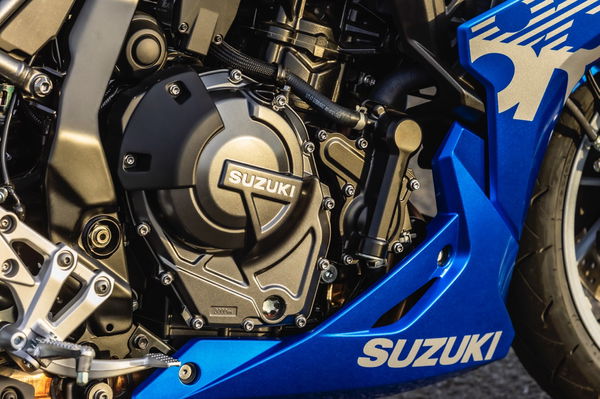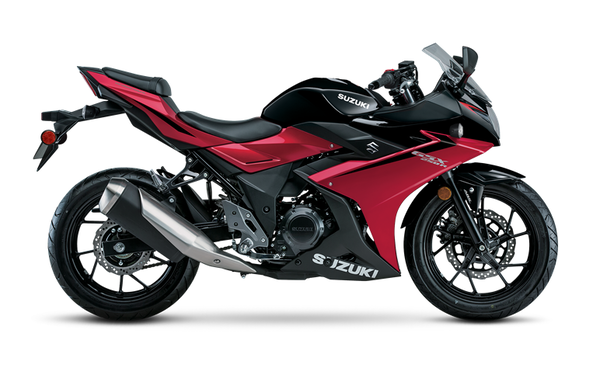Suzuki Developing Twin-Cylinder VVT System
A variable valve timing system is being developed by Suzuki for its smaller twin-cylinder bikes, resembling something from other brands

Suzuki is not new to the game of variable valve timing, or VVT, but it has not yet equipped its twin-cylinder bikes with the technology.
The most recent Suzuki GSX-R1000 was equipped with a VVT system, but the new one being developed in Hamamatsu is aimed at the manufacturer’s two-cylinder motorcycles.
Patents, published by Motorrad, show that Suzuki’s new twin-cylinder VVT system will use two different cam profiles, with two different intake valve rocker arms and two different intake cams. Oil pressure is used to activate an actuator that either pushes or pulls a pin connecting the second of the two rocker arms of the engine’s intake valves to the second of the intake cams. One cam profile, referred to as the high-cam profile, opens the valves wider and for longer than the other, referred to as the low-cam profile, meaning the high profile offers more aggressive performance for higher engine speeds, while the lower offers a less aggressive but more progressive feeling for lower engine speeds (i.e. for when a rider is first opening the throttle when leaving a corner).

The system is similar to one used on single-cylinder engines by Yamaha and Piaggio, but Suzuki’s of course differs from those in its application to a twin-cylinder motor. The only problem for us in Europe is that Suzuki doesn’t sell small-capacity twins here, and the patent shows the system in use on the 248cc twin used in the GSX-250R and V-Strom 250, for example, which aren’t marketed here.
For Europe’s motorcycle market to take advantage of Suzuki’s small-capacity twin-cylinder VVT tech - assuming it makes it to production - a new Suzuki 350-500cc range would likely be required.
Find all the latest motorcycle news on Visordown.











